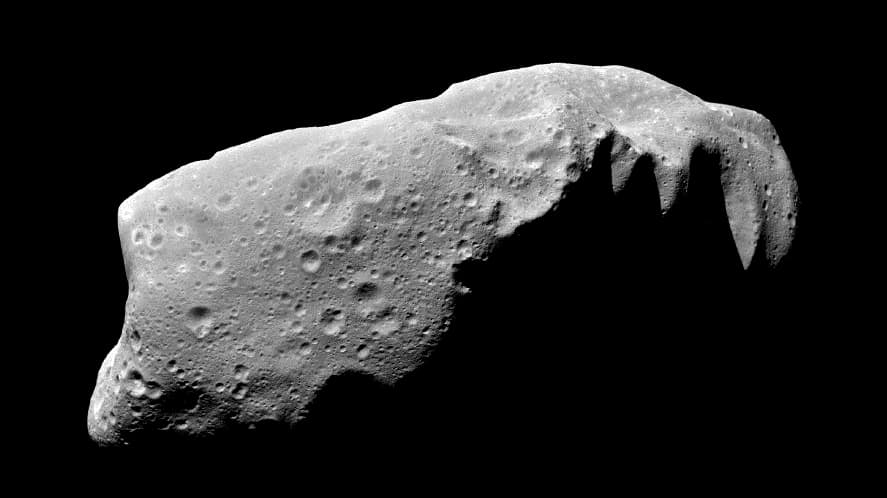How easy is to navigate through an asteroid field? Do we need to take precautions when we send probes through them?
Andrew, Sidney.
I’m afraid TV shows and movies have lied to you: asteroid fields are not difficult to navigate. Asteroids tend to be very sparse and spread out. 12 probes have traversed the asteroid belt without any problem.
Let’s look at the Solar System. Between the orbit of Mars and Jupiter, there’s the asteroid belt. The main belt contains only 200 objects larger than 100 kilometres, and scientists estimate that there are between 750,000 and 2 million objects larger than 1 kilometre.
The asteroid belt spreads between 300 million and 500 million kilometres from the Sun, and the orbits within the belt have an inclination between 0 and 20 degrees. That’s an enormous volume to occupy.

Asteroid Ida – Credit: NASA
Although the number of asteroids is large, they are very spread out. The average distance between two asteroids is over 10 times the distance between the Earth and the Moon. Even if all the asteroids were on the same orbit of Asteroid (493) Griseldis, for example, which is almost 29 billion kilometres long, they would still have a 15,000 kilometre gap between each of them.
Although spacecraft are safe, impacts among asteroids are common, at least in astronomical timescale. Asteroids bigger than 10 kilometres tend to experience a collision every 10 million years. Recently we were able to spot such a collision happening to (493) Griseldis.
So don’t worry about dealing with asteroids in space. Asteroids coming down on Earth are much scarier!

